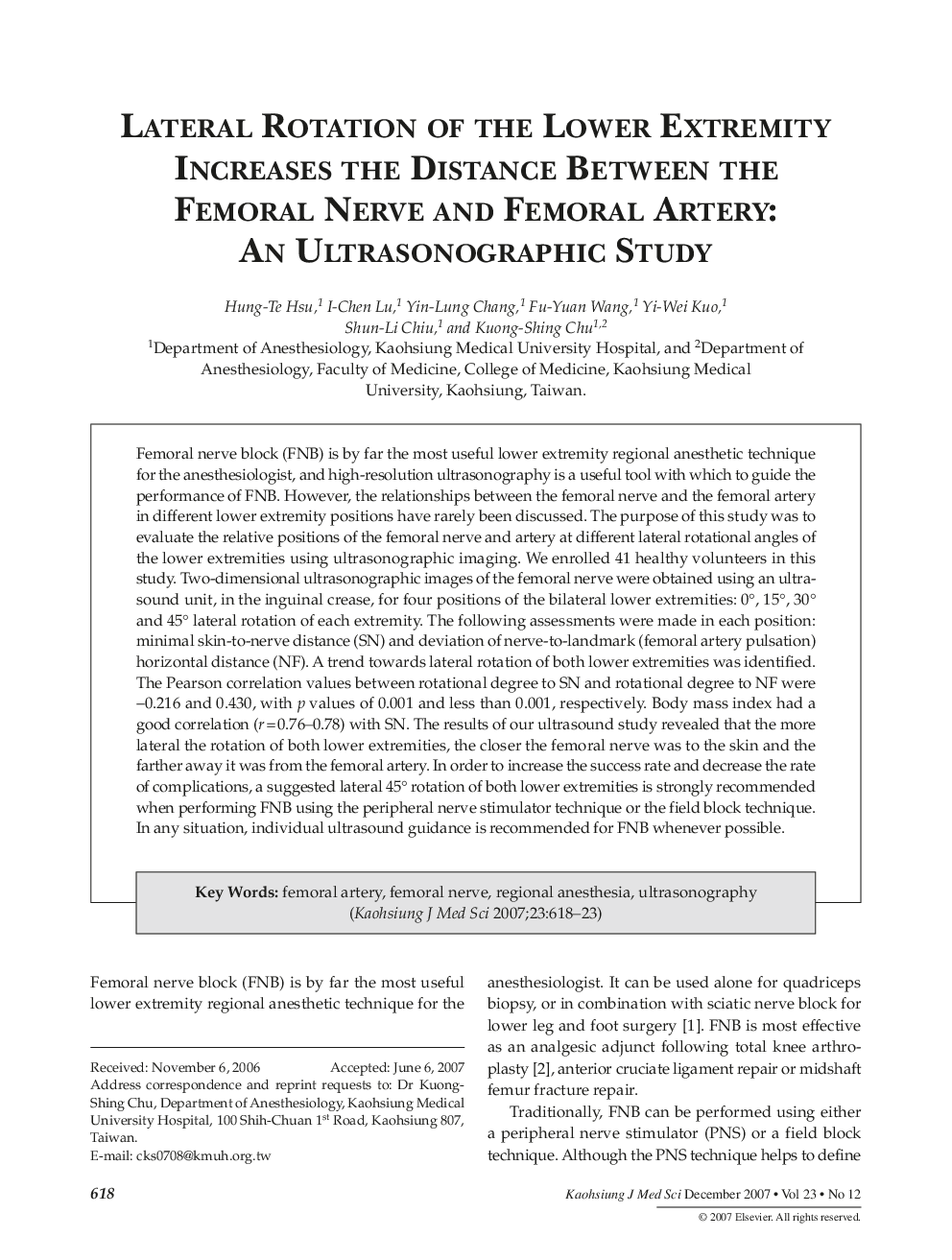| کد مقاله | کد نشریه | سال انتشار | مقاله انگلیسی | نسخه تمام متن |
|---|---|---|---|---|
| 3486826 | 1597015 | 2007 | 6 صفحه PDF | دانلود رایگان |

Femoral nerve block (FNB) is by far the most useful lower extremity regional anesthetic technique for the anesthesiologist, and high-resolution ulrrasonography is a useful tool with which to guide the performance of FNB. However, the relationships between the femoral nerve and the femoral artery in different lower extremity positions have rarely been discussed. The purpose of this study was to evaluate the relative positions of the femoral nerve and artery at different lateral rotational angles of the lower extremities using ultrasonographic imaging. We enrolled 41 healthy volunteers in this study Two-dimensional ultrasonographic images of the femoral nerve were obtained using an ultrasound unit, in the inguinal crease, for four positions of the bilateral lower extremities: 0°, 15°, 30° and 45° lateral rotation of each extremity. The following assessments were made in each position: minimal skin-to-nerve distance (SN) and deviation of nerve-to-landmark (femoral artery pulsation) horizontal distance (NF). A trend towards lateral rotation of both lower extremities was identified. The Pearson correlation values between rotational degree to SN and rotational degree to NF were −0.216 and 0.430, with p values of 0.001 and less than 0.001, respectively. Body mass index had a good correlation (r=0.76-0.78) with SN. The results of our ultrasound study revealed that the more lateral the rotation of both lower extremities, the closer the femoral nerve was to the skin and the farther away it was from the femoral artery. In order to increase the success rate and decrease the rate of complications, a suggested lateral 45° rotation of both lower extremities is strongly recommended when performing FNB using the peripheral nerve stimulator technique or the field block technique. In any situation, individual ultrasound guidance is recommended for FNB whenever possible.
Journal: The Kaohsiung Journal of Medical Sciences - Volume 23, Issue 12, December 2007, Pages 618-623